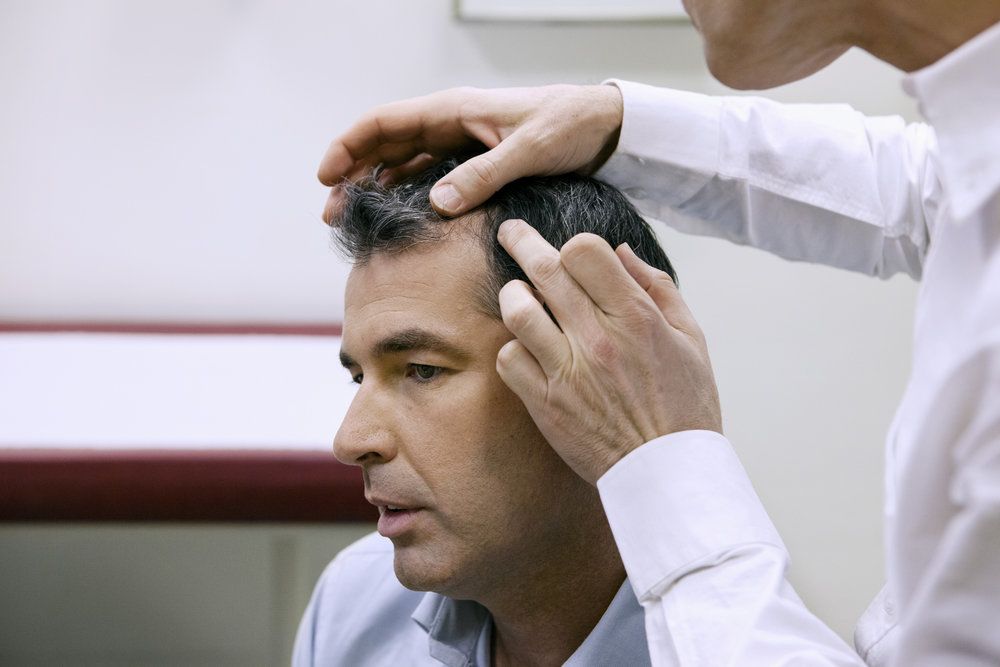Preparing Follicular Unit Grafts: About Donor Strip Slivering
 We always stress patience and deliberation when it comes to hair restoration surgery. Our Chicago practice routinely achieves exceptional results with hair transplant surgery because we are so meticulous and precise with what we do. The entire restoration process is broken down into different steps, and each is followed to maximize results and minimize complications and negative side effects.
We always stress patience and deliberation when it comes to hair restoration surgery. Our Chicago practice routinely achieves exceptional results with hair transplant surgery because we are so meticulous and precise with what we do. The entire restoration process is broken down into different steps, and each is followed to maximize results and minimize complications and negative side effects.
We've looked a lot at surgeries from a broad overview, but we'd like to now consider the procedures are a more microscopic level. With that in mind, let's go over the follicular unit preparation process, with a special focus on strip slivering.
What Is a Follicular Unit?
A follicular unit is an important part of the modern hair restoration process. The follicular unit consists of a hair follicle grouping of 1 to 4 hairs. The unit contains the hair, the follicle, sebaceous (oil) glands, nerves, and a small muscle.
During the hair restoration process, a strip of donor hair from the back portion of the scalp is taken, and the individual follicular units carefully removed. These follicular units can then be placed in the bald portion of the scalp to restore the hairline and promote regular hair growth in that area.
What Is Strip Slivering?
Strip slivering is the first part of the process of follicular unit preparation. Using binocular microscopy to examine the donor strip closely, a hair restoration specialist essentially dissects the donor tissue from the scalp, separating the follicular units from the rest of the skin and tissue that is taken. Following the slivering, the follicular units can be further isolated to their essentials in order to create refined grafts for the hair restoration process.
Why the Strip Slivering Process Is So Important
In the past, donor strips were taken from one part of the scalp and placed in the bald portion of the scalp. Punches were often taken from the donor strip, which resulted in the old-fashioned plugs of the past. These plugs were often poor spaced such that the hairline looked unnatural and the site of the plugs was quite obvious.
With strip slivering, the problems of plugs are not longer an issue. The donor strip is reduced down to follicular units and then refined further so that only an essential follicle and tissue is used in the restoration process. In essence, slivering makes natural results possible.
Hair restoration specialists work carefully and closely with the tissue to ensure that none of the essential components of the follicular graft are damaged. It is a delicate and precise process, and a testament to the improved techniques developed for hair transplant surgery over the years.
How Much Harvesting Is Necessary for Hair Grafts?
The amount of strip harvesting and consequent slivering will vary from patient to patient. Patients who need just a little hair transplant surgery to address their baldness will generally not require as much work as someone who is missing a lot of their hair.
During the consultation process, we can go over a number of matters regarding the type of hair restoration surgery, the amount of visits required, and how many hair grafts can be placed in a session to achieve optimal results.
What Comes Next for Hair Restoration
As noted above, after the donor strip is slivered, further refinement of the graft occurs in a process known as graft isolation. Once isolated, the hair grafts are sorted by the number of hairs contained in each graft, in groups of one, two, three, and four. Varying the numbers allows hair restoration specialists to create natural hair density and texture. Once all is sorted, the grafts are then stored to ensure they are properly hydrated and protected from damage.
Contact Chicago Hair Institute
For more information about hair restoration surgery and how it can enhance your overall appearance, be sure to contact our advanced hair restoration surgery center today. The team at Chicago Hair Institute looks forward to your visit and helping you achieve a healthy and full head of hair.





